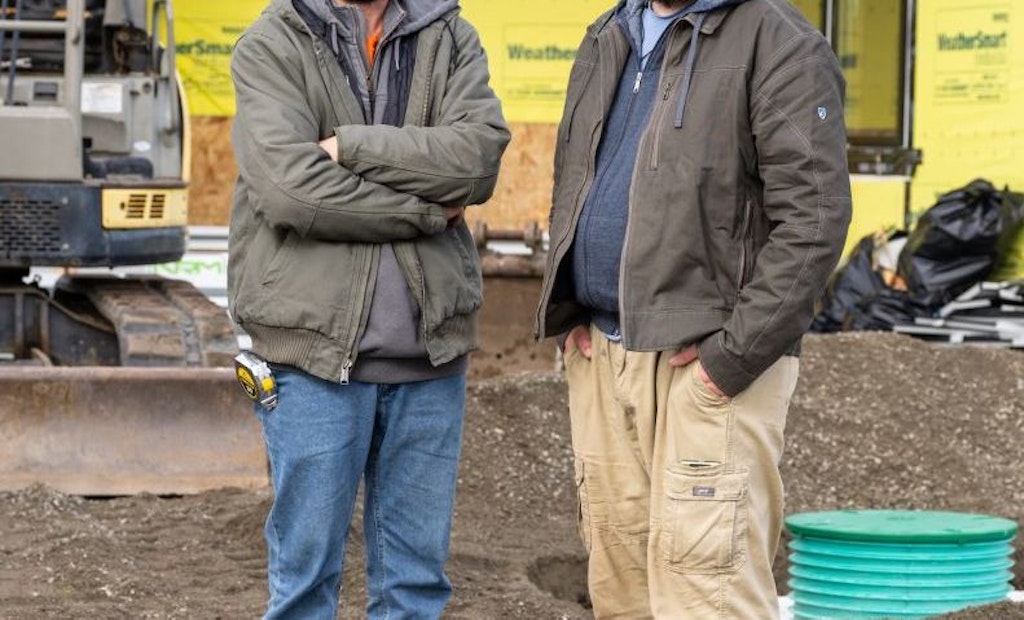Interested in Systems/ATUs?
Get Systems/ATUs articles, news and videos right in your inbox! Sign up now.
Systems/ATUs + Get AlertsBen and Seth Miller often encounter challenging soils and confined sites on small lots when installing onsite treatment systems to Washington State’s Whidbey Island. The brothers, who own Whidbey Septic based in Oak Harbor, deal with these sites using NuWater BNR aerobic treatment units (Ek Engineering) or the OSCAR sand-bed drip dispersal technology (Lowridge Onsite Technologies).
One-tank solution
The NuWater BNR system employs a single tank containing an extended aeration activated sludge process. The tank consists of three compartments that combine to function as a thorough treatment process.
Wastewater from the home flows into a pretreatment zone where microorganisms begin to break down and convert waste into gases and additional microbes. At the same time, nitrate is converted to nitrogen gas. The partially broken down waste then enters an aeration chamber where it is continuously exposed to microbes for the remainder of the process. The digestion action of the aerobic microbes reduces pathogenic bacteria.
After retention time in the aeration zone of 24 hours or more, the mixture enters the clarifier where calm conditions encourage separation of microbes, solids and treated wastewater. The microbes that settle out sweep back into the aeration chamber. An airlift process returns a portion of the treated wastewater to the pretreatment zone for additional treatment and denitrification. The result of aeration and quiescent separation followed by recirculation is an effluent that is clear, odorless and low in nutrients.
In addition to typical applications, the NuWater system is suited for repair sites and for sites with poor soils, down to as little as 12 inches of available treatment soil, according to the manufacturer.
Compact sand-bed treatment
The OSCAR system, which uses Netafim drip dispersal tubing in a coil configuration on a bed of sand, enables installation on compact sites with flexibility to create irregular absorption areas that work around obstacles.
In a typical installation, the site is first raked to break the soil down to a depth of about 6 inches. A 1-foot-deep layer of sand is placed on the ground, and drip irrigation coils are placed on top. This is covered by another 6 inches to 1
foot of sand.
A typical residential OSCAR absorption field measures 20 by 40 feet. The actual absorption area is 10 by 40 feet; the additional width consists of the sloping sides. Ben Miller observes, “It’s a really small footprint. The manufacturer says it doesn’t have to be a rectangular shape. It can curve. You can even do a half-moon or an irregular shape.”
Lowridge Onsite also offers an XO2 aerobic treatment unit to supply pretreated effluent to the absorption field.
To learn more about Whidbey Septic and brothers Ben and Seth Miller, check out the profile story in the February issue of Onsite Installer.






